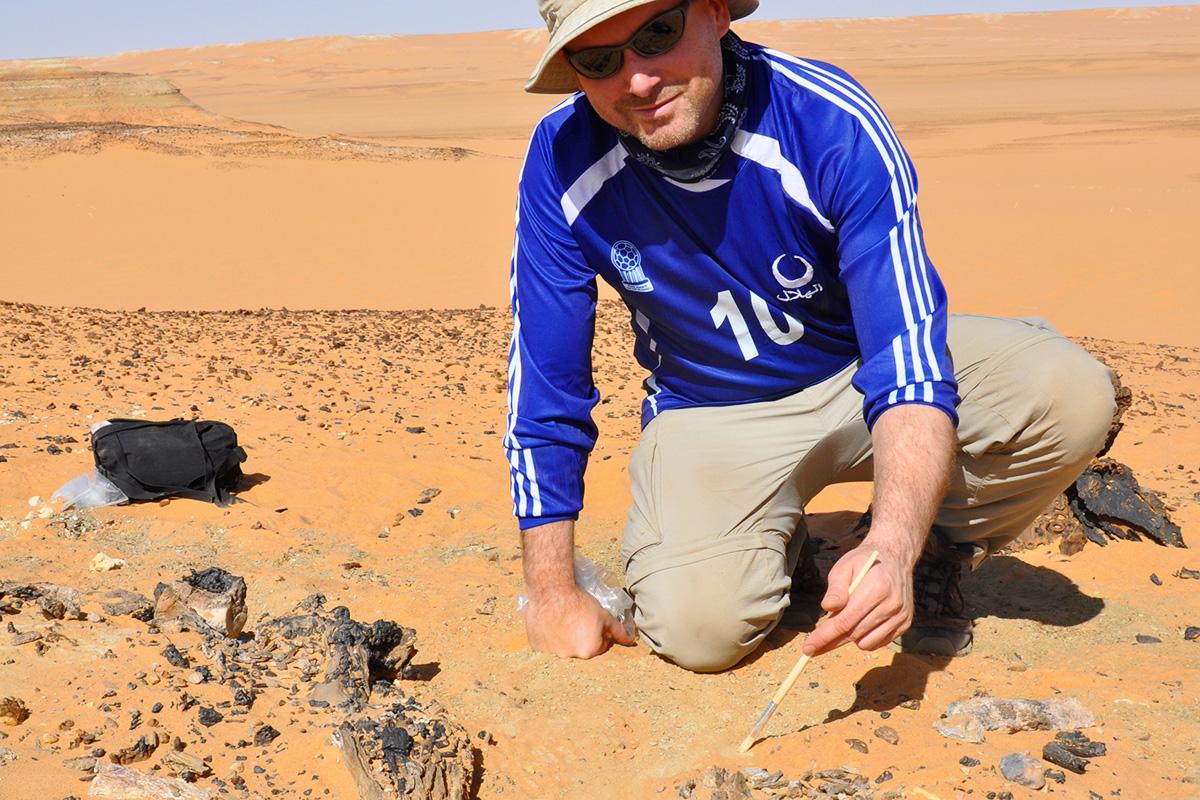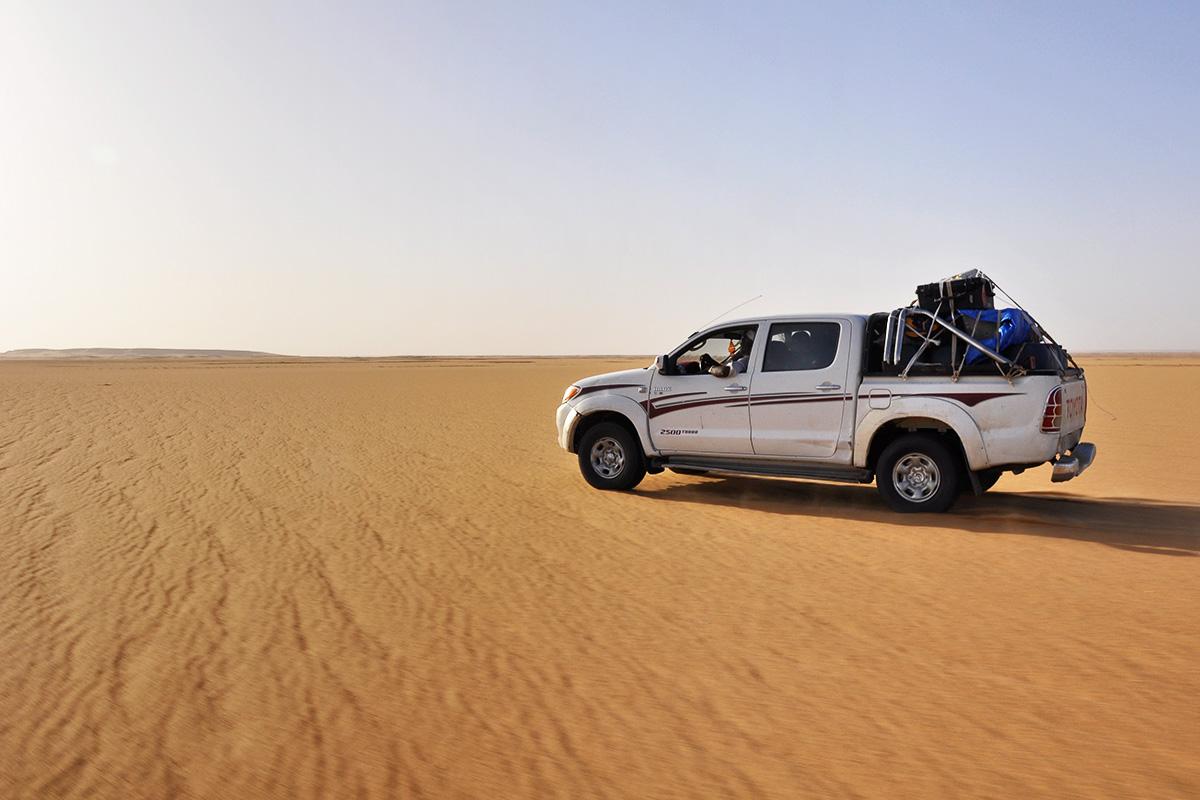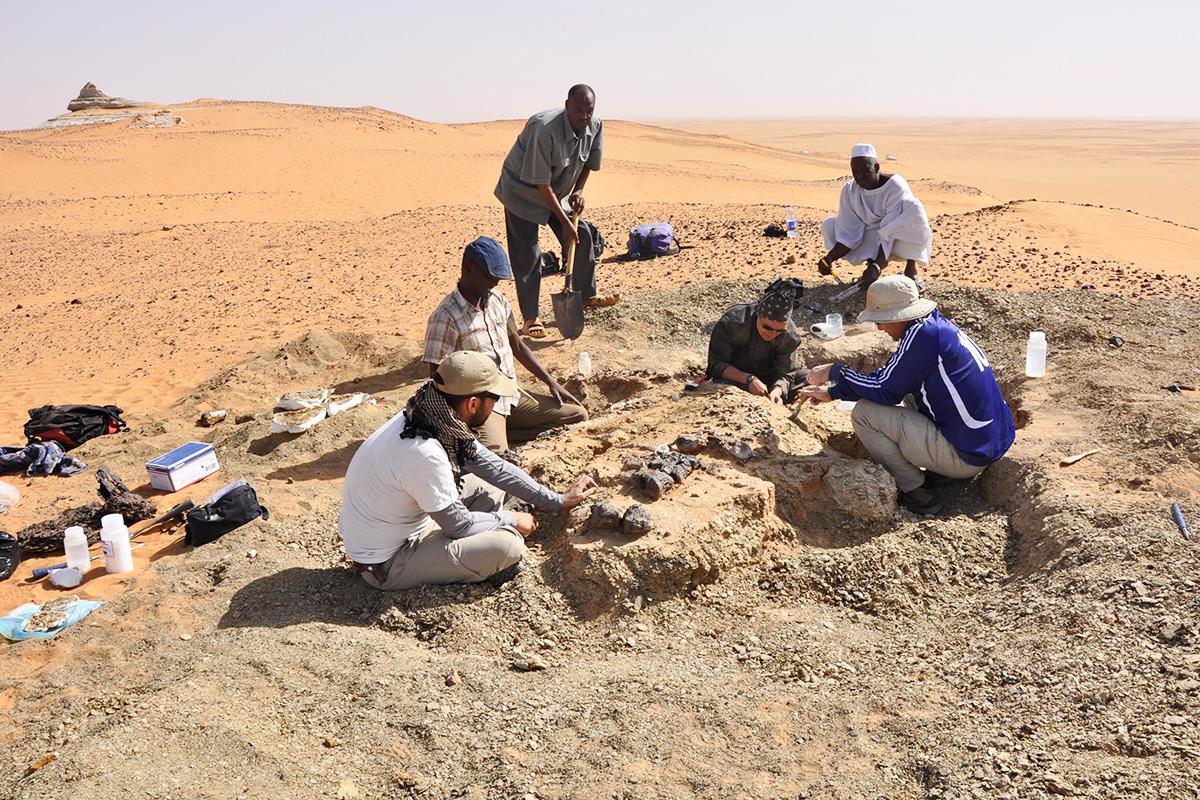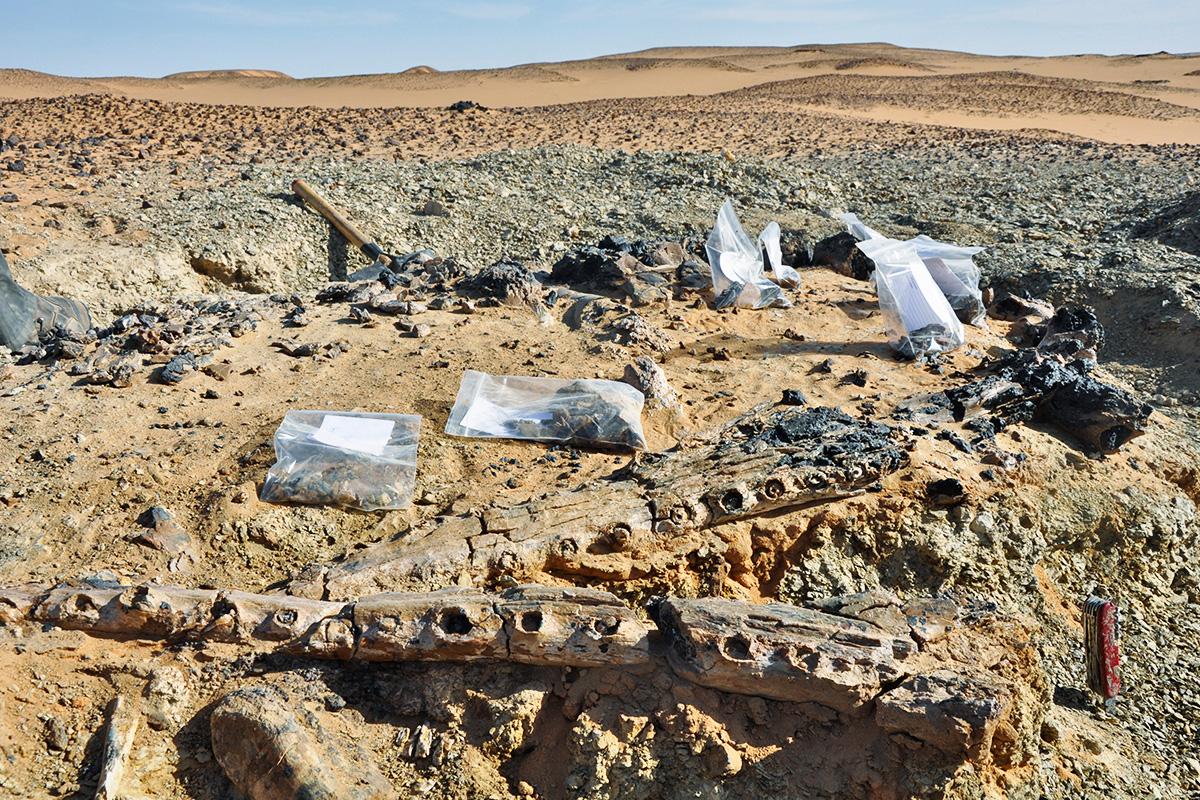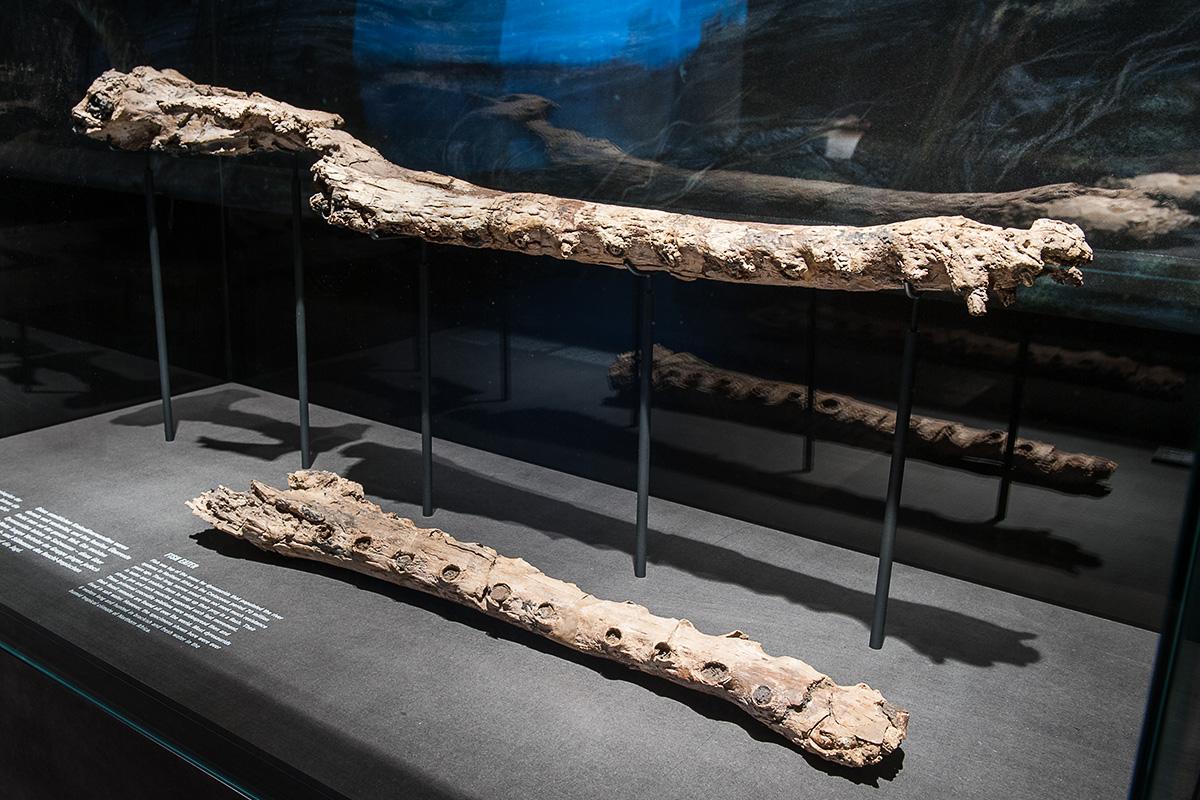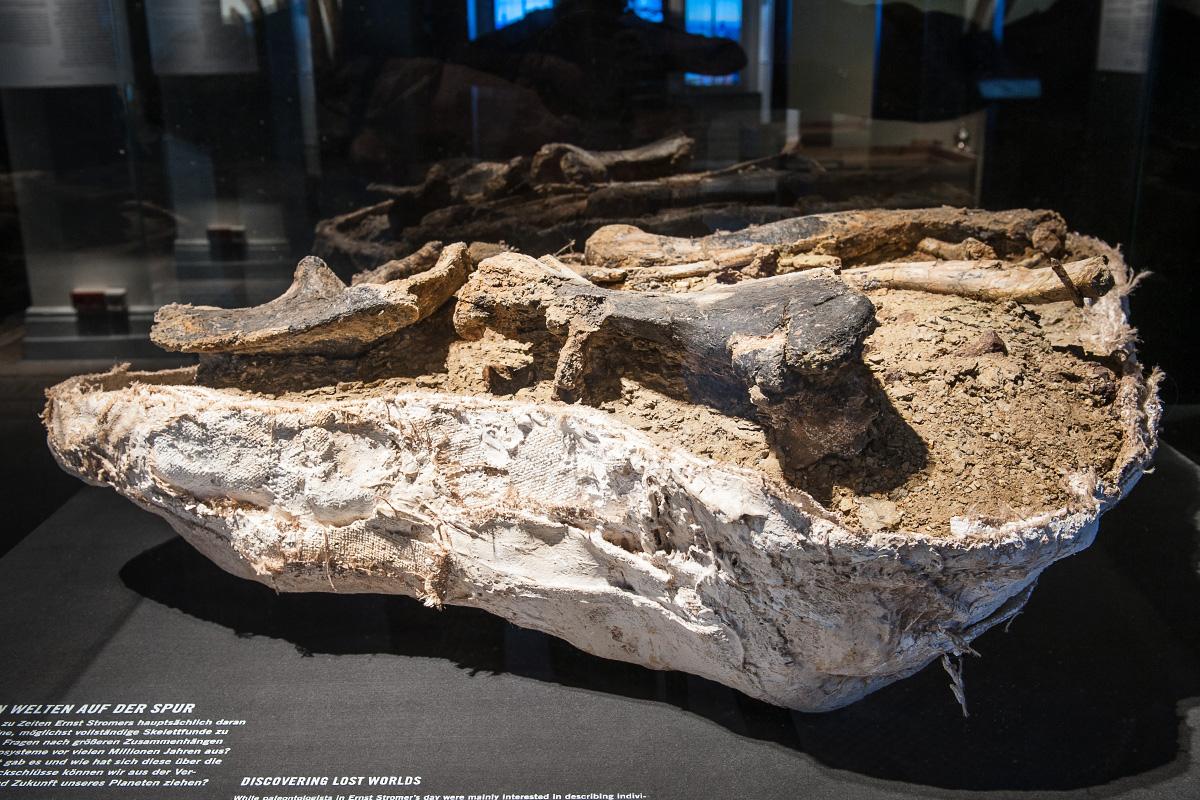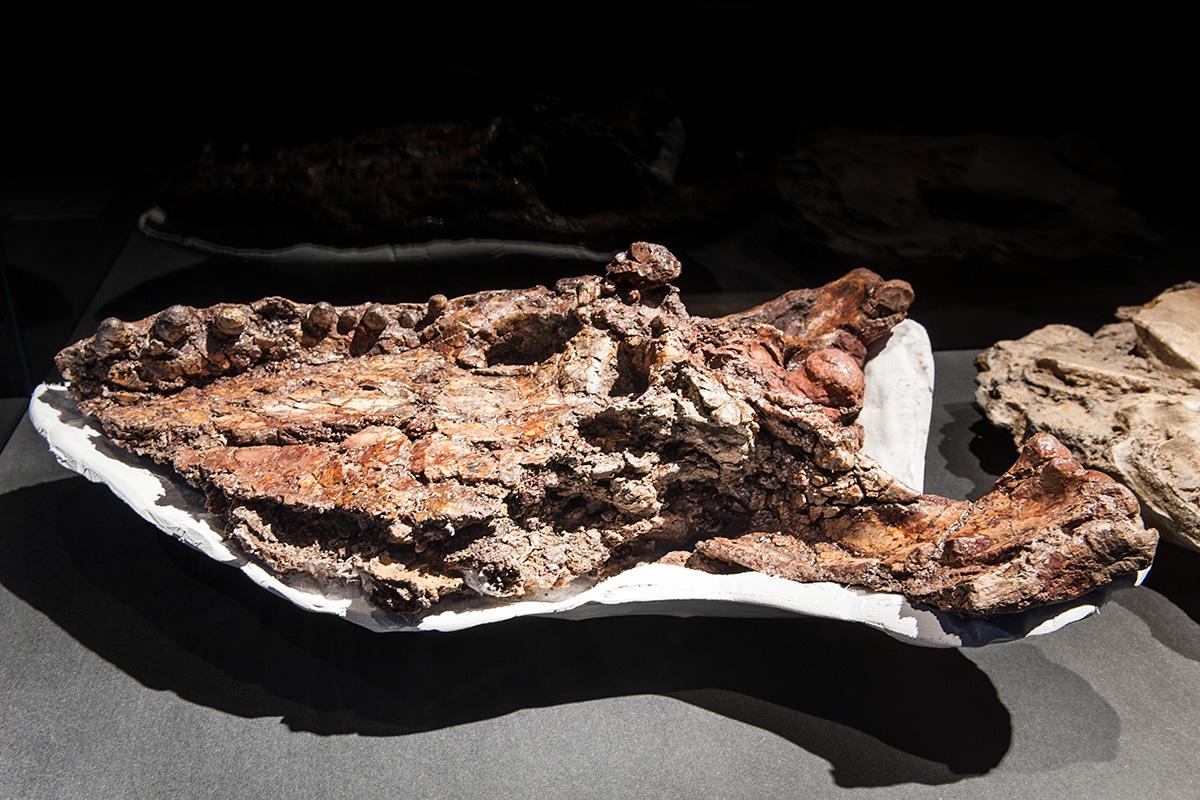While traditionally, palaeontologists were mainly interested in describing individual, and ideally complete fossil skeletons, today’s scientists are also focusing on the bigger picture. What were ecosystems like many million years ago? What was the flora and fauna like and how did they change over time? Which conclusions can be drawn from the past, and can they tell us anything about the present and future of our planet?
Scientific collections and new excavations help scientists to piece together an ecosystem like the one in which Spinosaurus once lived. At the Museum für Naturkunde, ecosystems of different geological periods are studied. Together with colleagues from Canada, Germany and Sudan, palaeontologist Johannes Müller is working on a better understanding of the world in North Africa just before the mass extinction of the dinosaurs.
During its excavations in the barren desert region of the Sudanese Sahara, the international team is searching for fossils that open a window into North Africa’s ecosystems from many million years ago. With success – they found a wide range of fossils from the Cretaceous period: Complete crocodile skeletons and a large number of plant remains, small animals like salamanders, frogs and snakes, and even fossilized bones of dinosaurs – giant plant eaters and land-dwelling raptors.
It is thought that similar to the Egyptian desert, where Stromer once found the first Spinosaurus, the Sudanese desert was also part of a contiguous area characterized by large river systems – possibly like the Amazonas region today.
In the special exhibition “Spinosaurus” the Museum für Naturkunde puts, for the first time, a selection of these extraordinary fossil finds on display. Some of them have not even been scientifically described yet, but are the subject of ongoing research at the museum.
